Rolling hills of vineyard-covered terrain…grand chateaus...breathtaking views...deer and coyotes frolicking in the yard. That’s how we expect wineries to look, right? That's not the case when you’re exploring Oakland and Berkeley’s urban wineries — except that almost all of them are very dog-friendly (and kid-friendly) so it’s easy to confuse a coyote for an Australian Shepherd.
East Bay Wine Tasting: 5 Spots to Try
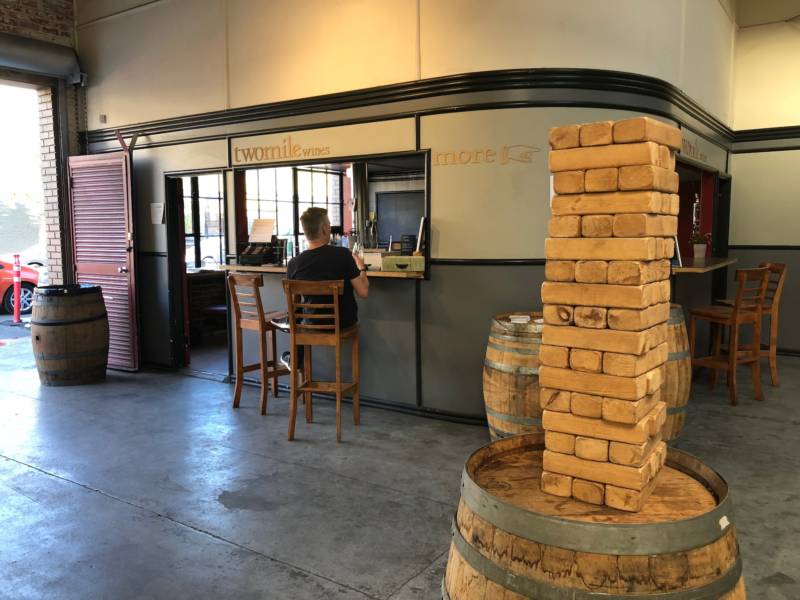
There are roughly 15 or so urban wineries in the two East Bay cities, most of which are open to the public on weekends and concentrated in the Gilman District of Berkeley, Uptown Oakland or Jack London Square. Next time you’re thinking about wine tasting, consider skipping the long drives to Sonoma County, Napa County, Livermore Valley and Santa Cruz Mountains.
Of course, there are terrific wineries in all those regions (and you should go when the logistics work out!), but it’s so much easier/faster/more fun to swing over to the East Bay for an afternoon of wine on par quality-wise with anything in St. Helena or Healdsburg. Better yet, the prices are a fraction of what you’ll find in the big-name wine regions.
For this article, I decided to not include the trailblazing trio of Donkey & Goat, Broc and Dashe (note that they just moved from Oakland to Alameda) because there are already so many articles about them. I say, visit those three wineries, but try expanding your trip to these other wineries that are a little less well known but just as delightful.
As you’ll see, many of these wineries produce wines from various Northern California regions. Remember, many wine regions like Burgundy have had this non-estate centric model for centuries where producers make wine in a central location after sourcing from all kinds of vineyards in myriad directions. It isn’t new. It’s just…different.
Let’s cheers to visionary winemakers and head over to BART now for a weekend day of wine.
Côte West
2101 Dennison St.
Suite A, Oakland
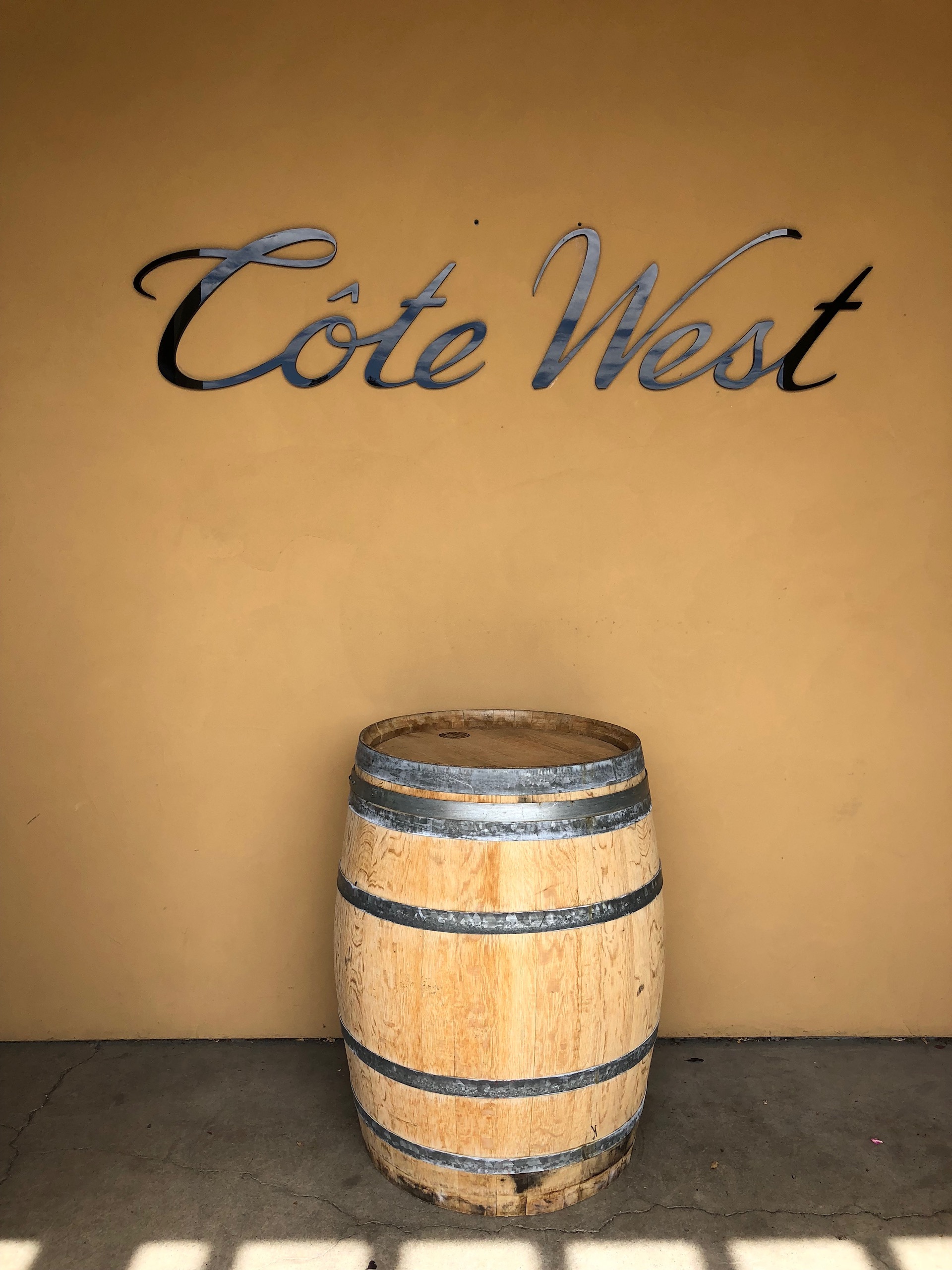
Côte de Beaune, Côte de Nuits, Côte Chalonnaise...Côte Ouest? Well, make that West and you get the idea of how this husband-and-wife run winery is a compelling (and playful) mash-up of Burgundy’s Old World mindset and methods, with California’s terroir and New World creativity mindset. In other words, the best of both wine worlds.
Of course, it’s nothing new for California winemakers to apprentice/work/study in France’s esteemed wine regions. However, it is exceedingly rare for an American to have the chance to work with the truly elite producers of Burgundy — the ones where collectors don’t blink at paying four digits per bottle. Mention the words “Domaine des Comtes Lafon” to any Burgundy drinker and you’ll hear phrases like “epiphany” and “liquid gold” and “best white wine in the world” often mentioned.
Most of us probably will never have a chance to offer an opinion on that world-renowned Meursault producer (which means only Chardonnay for white wines and Pinot Noir for the not as ‘famous’ red wines), but Bret Hogan can because he interned there after receiving his Viticulture & Enology Masters degree from the esteemed wine program at UC Davis. Upon returning, he spent two years as winemaker for San Francisco’s Dogpatch Wineworks before crossing the Bay to create this personal project with his wife Kerrie.
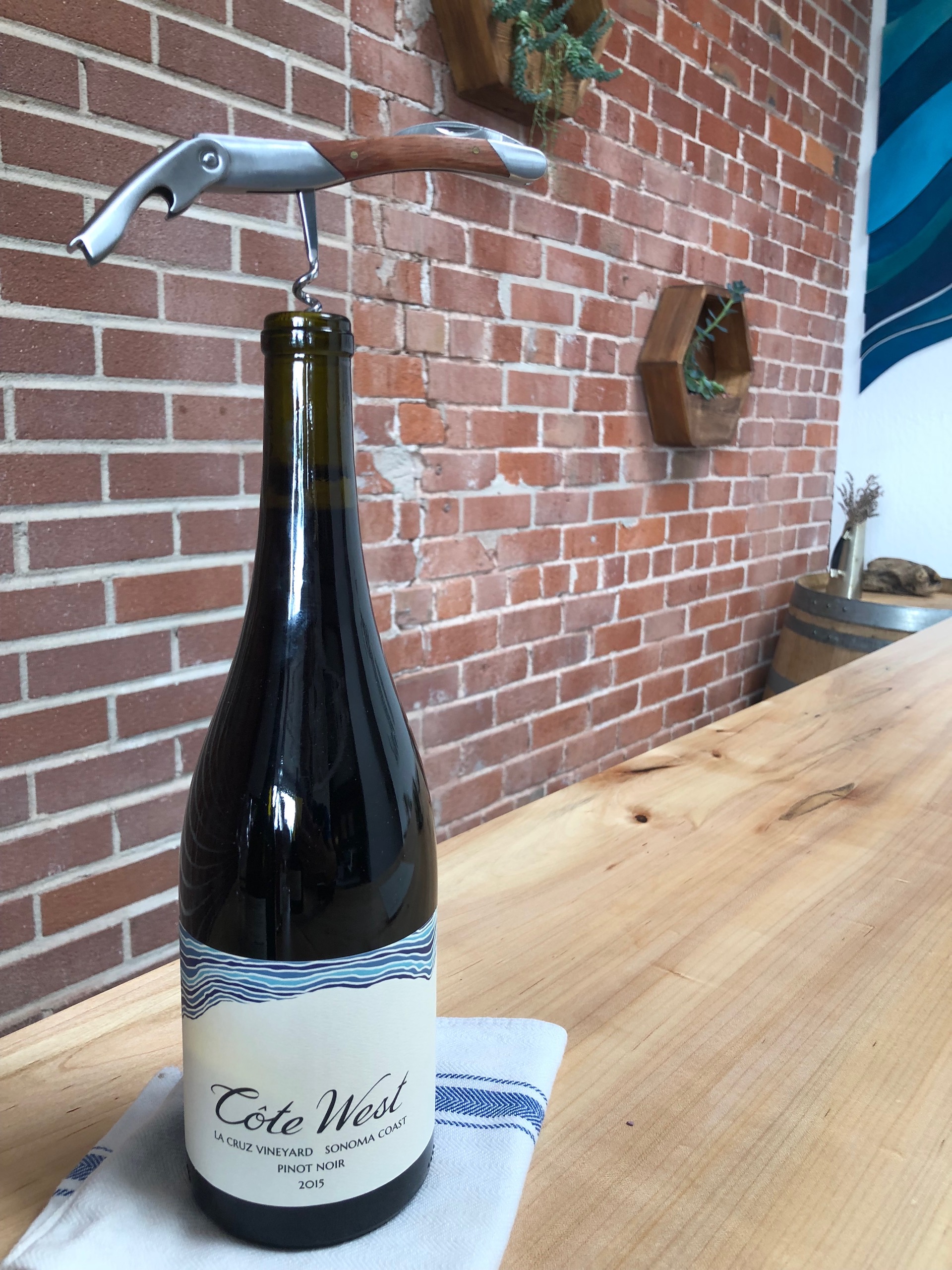
So, since we’ve been tossing around the ‘Burgundy’ name a lot with Côte West, you’re probably curious how the Chardonnay and Pinot Noir are? Both 2015’s are from the La Cruz Vineyard on the Sonoma Coast and both indeed toe the line effortlessly between Burgundy’s non-intervention style and muscle-bound texture, with classic Sonoma Coast deep fruit and rugged earth notes. They’re sensational wines, managing to be restrained and elegant, yet exciting simultaneously.
The same can be said with all of the Côte West wines, whether it’s a fresh, vibrant Pine Mountain Vineyard Sauvignon Blanc Pétillant Naturel, or a Dry Creek Valley Grenache that delightfully bridges the gap of the grape’s tendency to be too herbal or too fruity.
Tastings are $15 and only on weekends at the winery, which is located in the most out-of-the-way location of any of the urban wineries in the East Bay. You’ll find it at the Embarcadero Cove neighborhood of Oakland, squeezed between the southern tip of Alameda and 880.
Tintype and twomile
477 25th St.
Oakland
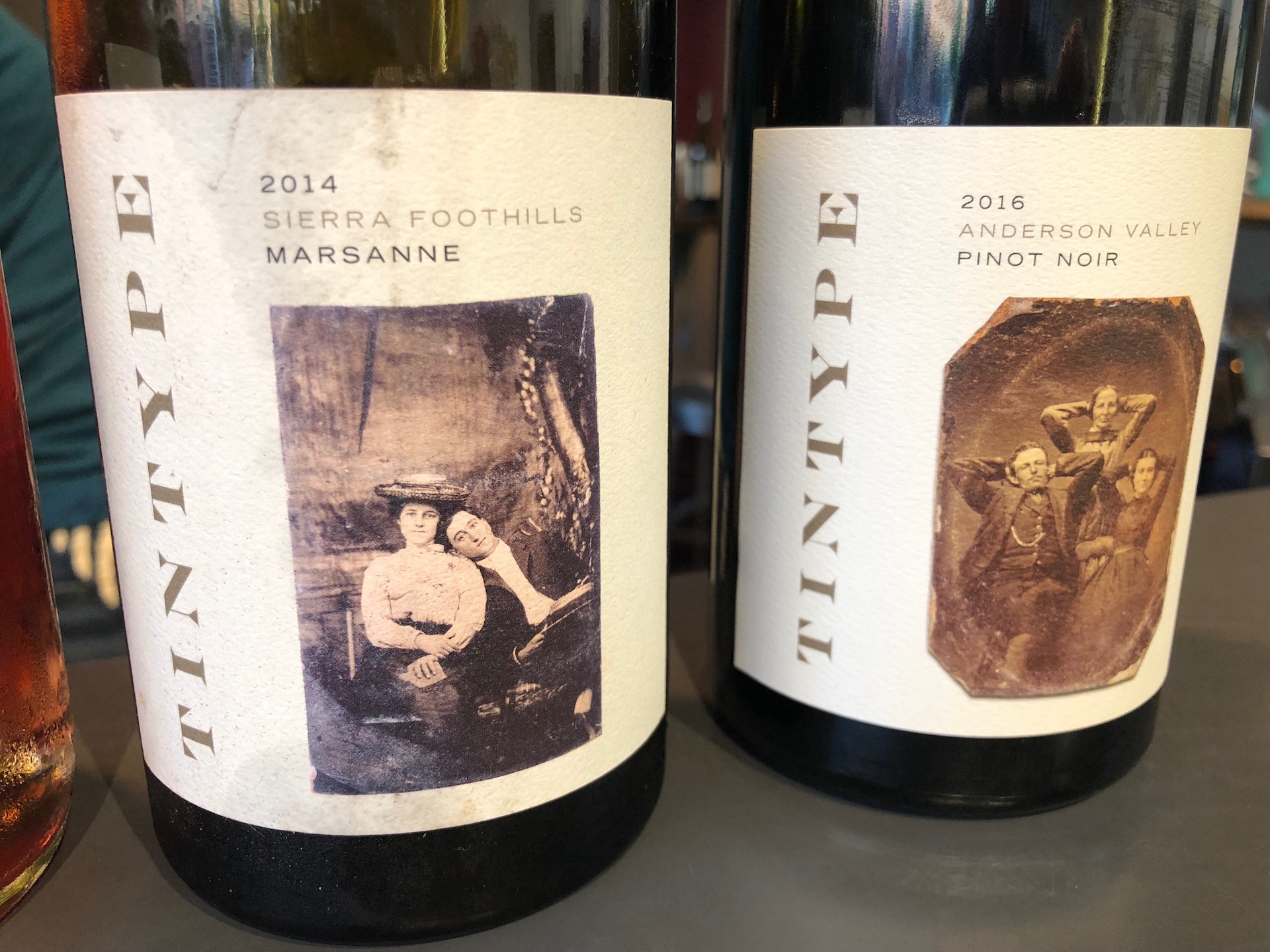
Most urban winery areas are usually industrial warehouse-filled with limited dining and nightlife options — except where you’ll find this duo of Oakland producers. Tintype and twomile make their wines and serve them in a tasting room in Oakland’s booming food and drink-heavy Uptown neighborhood. Their shared tasting room (with Oakland Spirits Co.) and wine production spaces are across the street from the Forage Kitchen shared-food incubator business space, near dozens of bars and restaurants, and also right by the heart of where Oakland’s First Fridays are.
Technically their “winery” space is about three doors down 25th Street from the tasting room that resides within an art gallery space that used to be a factory for manufacturing glass windows for cars. But, hey, it’s the same building, same roof.
Visitors can visit on Thursday and Friday evenings, along with Saturday afternoons. Since this particular tasting room is pretty much a bar surrounded by gorgeous art, the vibe tends to be more casual, and guests are allowed to pretty much choose whatever journey they want with both or one of the wineries.
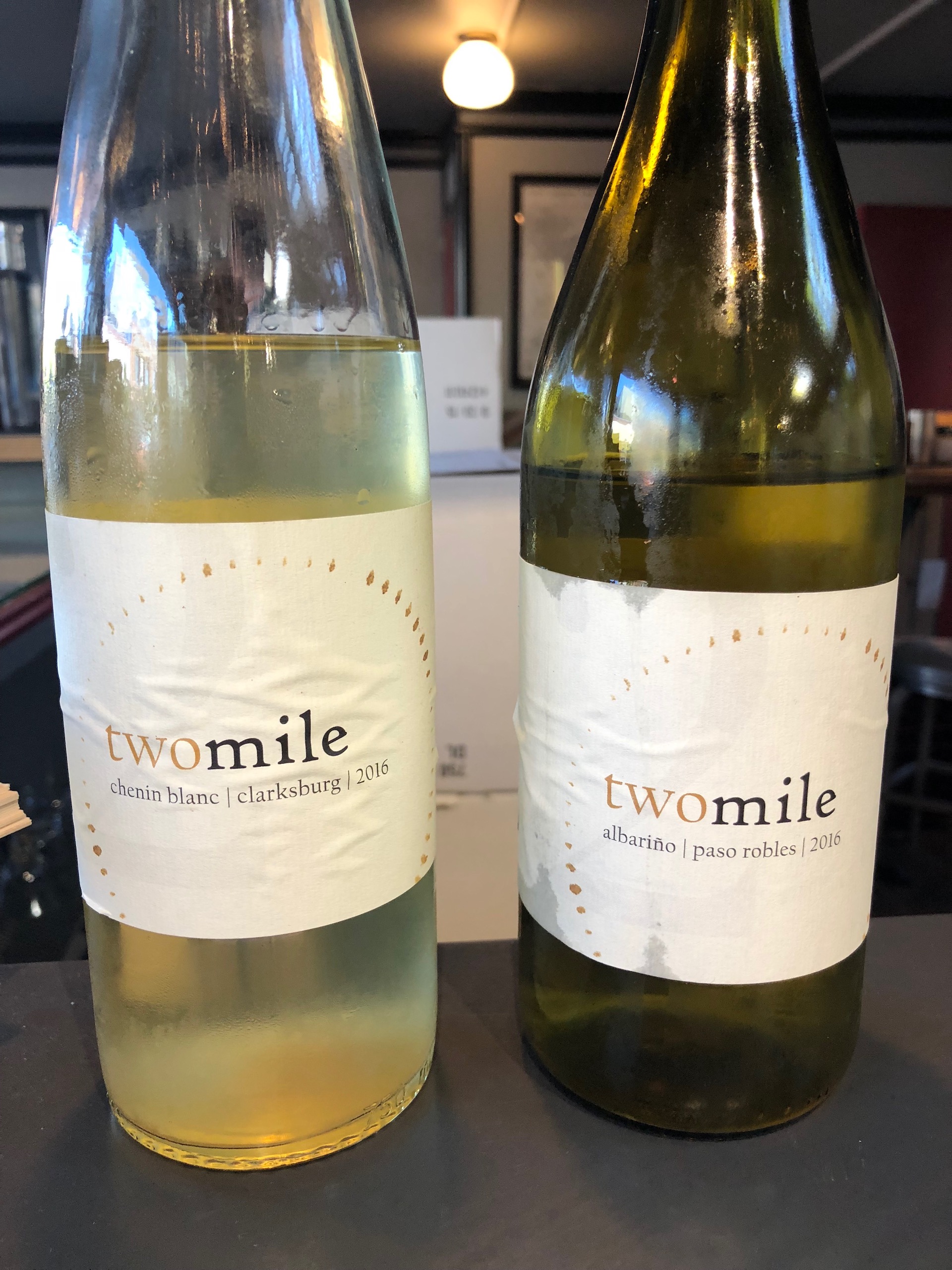
Of course, for a first-time visitor, the $11 mixed tasting is the way to go. There, you’ll discover the crisp, powerful twomile Albariño from Paso Robles. You’ll also see the great work with Mendocino County Pinot Noir grapes that Tintype is doing, both in the strawberry and watermelon-dense rosé (from Potter Valley) and the lush, blueberry-forward Anderson Valley Pinot Noir.
Both wineries source from all over the Central and Northern parts of the state and both don’t have particular ‘signature’ varietals that they really want to highlight. In general, twomile tends to present a more traditional, refined style, while Tintype can sometimes veer towards the natural, sometimes funky direction. But, both producers’ themes are really about poised, expressive wines that highlight the grapes’ particular homes in Northern California.
And, there’s a big Berkeley connection for both wineries. The ‘two miles’ for twomile refers to UC Berkeley’s old two-mile (and for a time three miles) radius from the center of campus where alcohol could not be sold. Owner/winemaker Adam Nelson originally started making wine with his wines for the twomile label right outside of this radius in Berkeley on San Pablo Avenue (though the alcohol prohibition law enforced by the radius was long gone at that point in the early 2000s).
Meanwhile, Tintype co-founder Nick Johnson worked an internship at Berkeley’s Donkey & Goat in 2011, which led him to take his fiancée (now wife and fellow Tintype co-founder Abigail Vorce) on a bike trip of France’s celebrated wine regions. After working a 2012 vintage harvest in Alsace, they decided to create a winery back home. So, Tintype started two years later…and here we are today seven years after that decision at Alsace’s famed Domaine Binner, an estate that started making minimalist, mostly sulfur-free wines decades before Donkey & Goat and Tintype.
It’s all full circle – with a two-mile radius of course.
Blue Ox
1350 Fifth St.
Berkeley
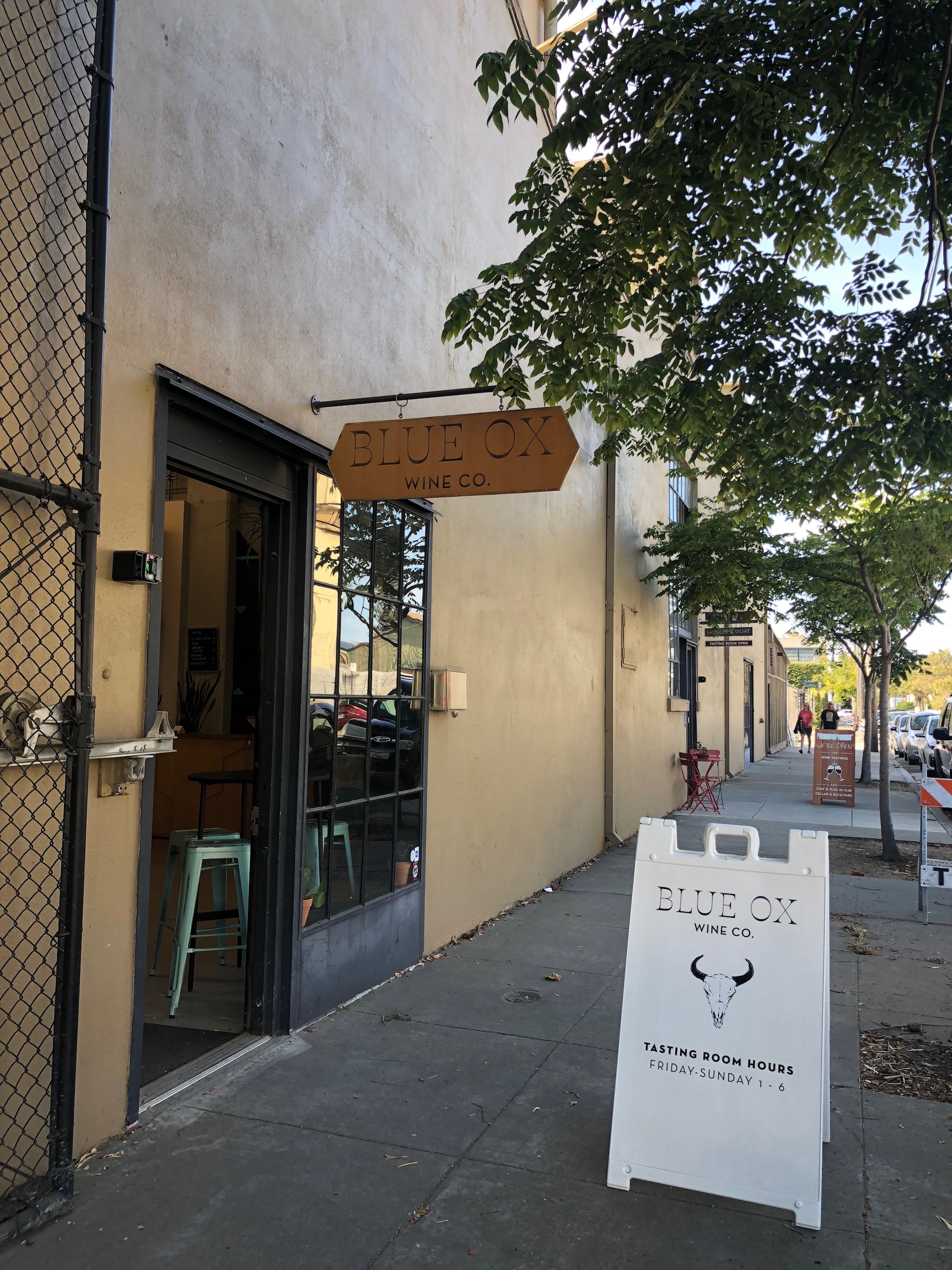
Blue Ox Wine Co. Josh Hammerling and Noah Kenoyer met at Broc Cellars and decided to start their own winery in 2017, but opted to specialize in a relatively rare concept for Northern California: sparkling wines produced from organic, dry-farmed vineyards. In a $15 tasting at Blue Ox’s, visitors can try some of that sparkling in the ‘Sunflower Sutra,’ a “pan-Californian” sparkling wine which is indeed a veritable smorgasbord of grapes and California regions. There was no sparkling Valdiguie available during our visit but it’s available on the winery website.
Of course, it isn’t all bubbly here. There’s the, ahem, lovely ‘In the Mood for Love’ rosé of Carignan sourced from Ricetti Vineyard in the Redwood Valley of Mendocino County, the slick ‘El Topo’ Mourvèdre from Laytonville (it’s in Mendocino County, about as far north as grapes grow in California) and a rare-to-see Cabernet Pfeffer grape bottling from the Lime Kiln Valley in San Benito County.
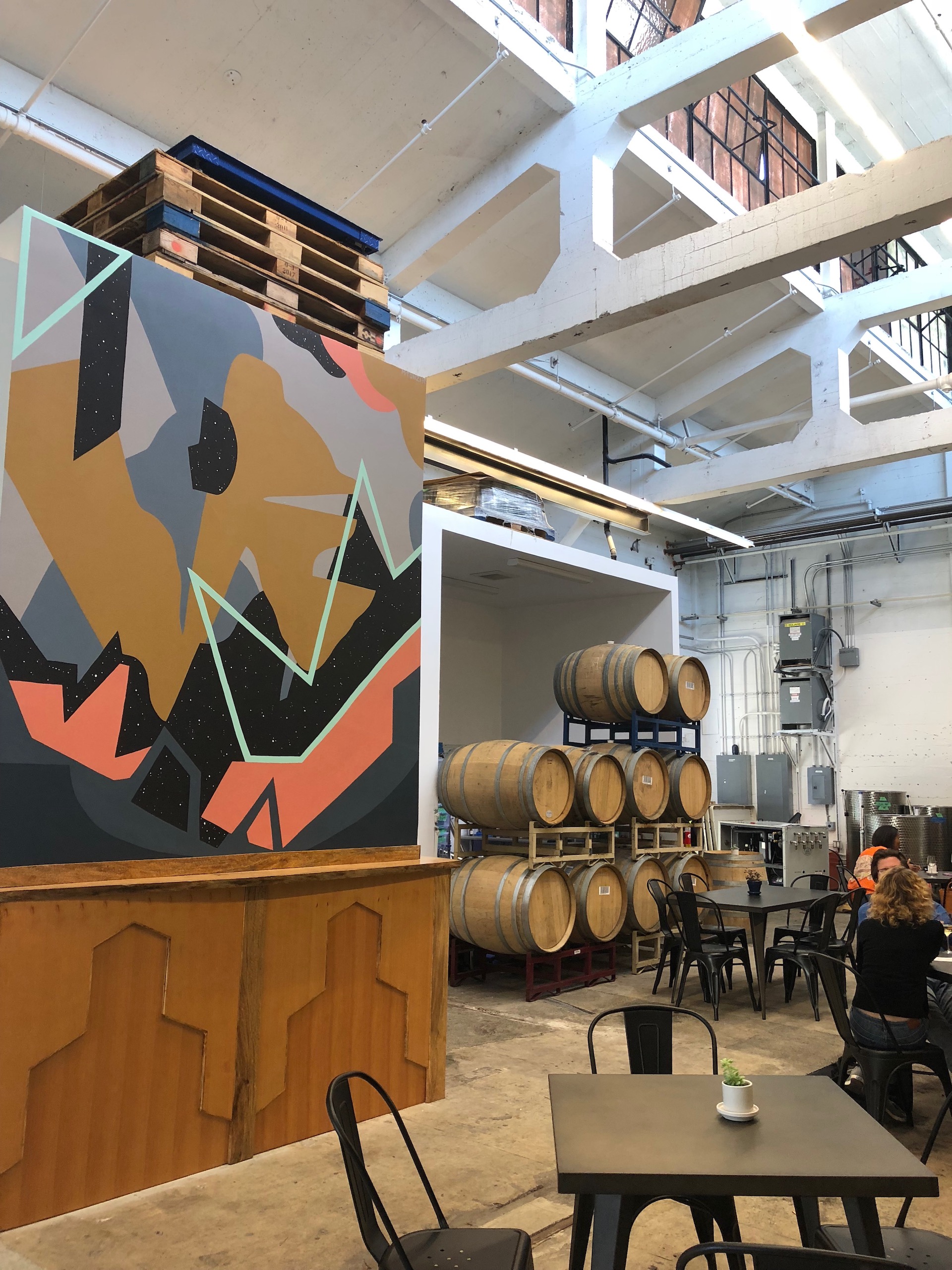
Most of these wines are also available by the glass from $8-$12, and that’s a good thing because Blue Ox just might be the most stylish, comfortable winery in the Gilman neighborhood. The seating options vary from high-tops by the window to larger tables next to barrel racks, and there’s some striking contemporary art on the walls which makes for a fun culture-meets-warehouse aesthetic. It’s a unique place for a unique winery.
Lusu and Whistler
805 Camelia St
Berkeley
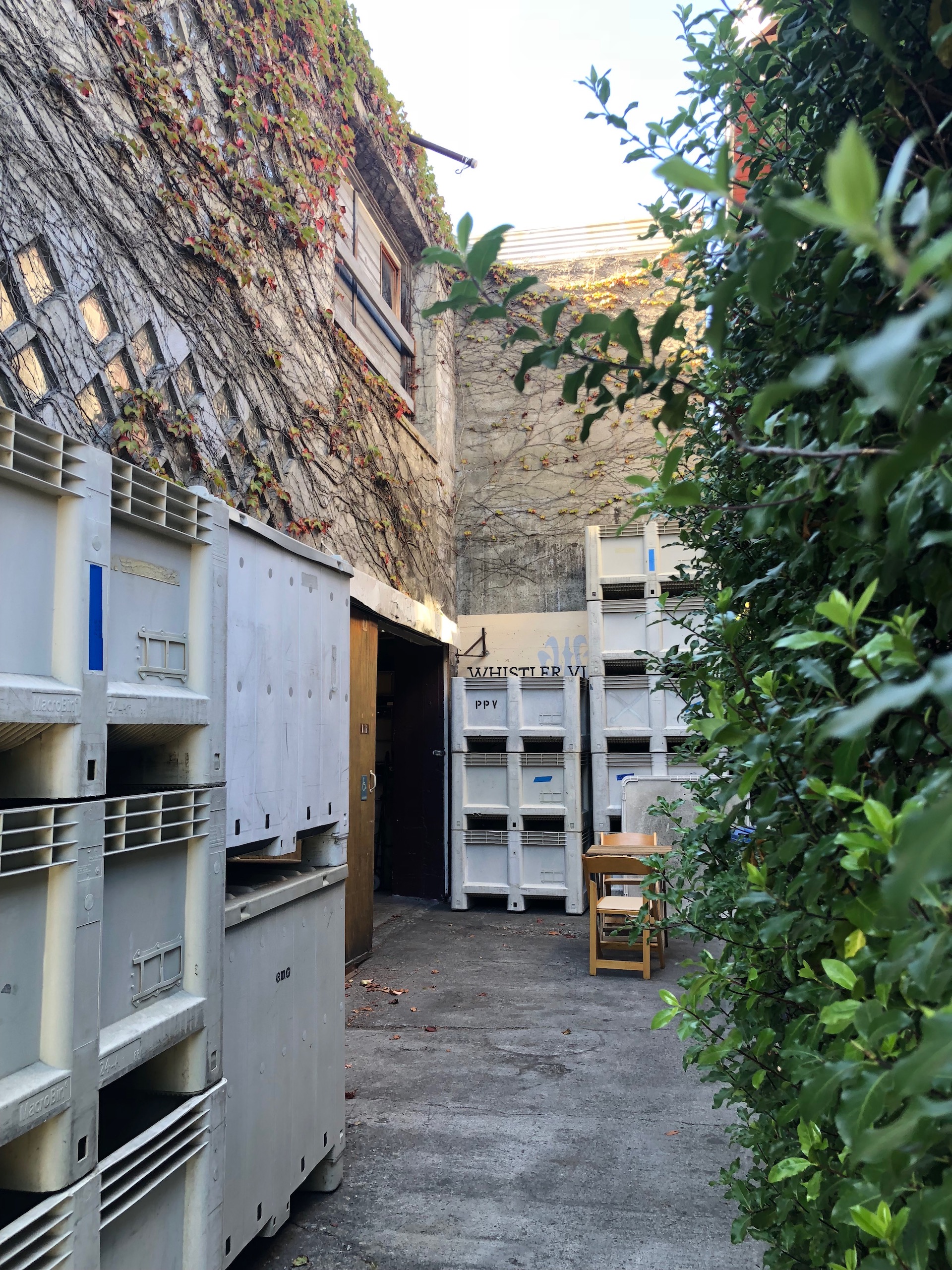
Just like Tintype and twomile, visitors can get two wineries here in one seating (well, standing in this case) for $15. The vine-covered winery housing Lusu and Whistler Vineyards (not to be mistaken with Whistler Cellars in Australia) resides on a side street tucked slightly away from the Fourth and Fifth Street winery rows where their Gilman neighbors resides.
Like that aforementioned Oakland duo, you’ll also try a wide range of California regions and wine varietals courtesy of Lusu and Whistler in their ‘home,’ which in reality is a small counter and standing area nudged into a tidy slice of the barrels and tanks-filled production space. Of all the urban wineries, this one feels most like tasting IN a winery.
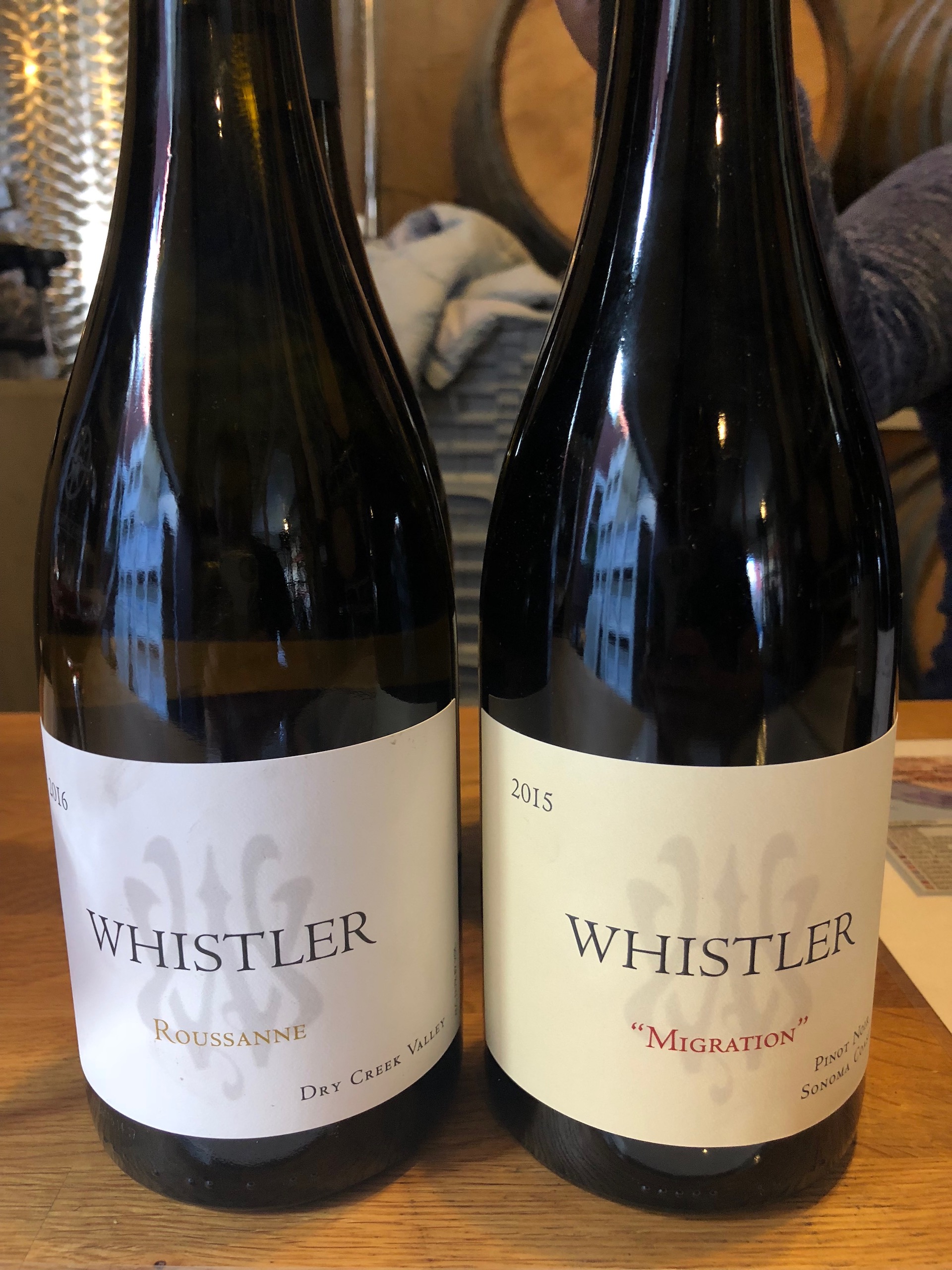
Lusu’s (its namesake was a companion of Bacchus the Roman god of wine who brought winemaking to Portugal) owner/winemaker David Teixieira comes from a winemaking family (in mainland Portugal, Madeira and California) and keeps the tradition going for his family with site-specific wines from all over our state. The results are fun, beautiful wines — always a bit edgy but never weird. The Santa Lucia Highlands Riesling is a highlight as is the ‘Farmer’s Hand’ made mostly of Tempranillo from Lodi’s Mokolomne River AVA.
Whistler, on the other hand, is a Pinot Noir-focused winery courtesy of Drs. Stig Hansen and Jennifer Whistler. Their main property is in some of the Sonoma Coast’s most esteemed Pinot Noir territory in the area around Annapolis that’s home to the celebrated Peay Vineyard. The area is Pinot Noir gold for its year-round fog and sun, combined with a constant marine breeze.
Each estate Pinot Noir is gorgeous and distinct, differing slightly in terms of clones and areas of the vineyard. The regular ‘estate grown’ bottling is the most elegant and red berry-forward, while ‘Ficus’ has a lot more energy and jammy fruit. There is also Viognier grown on the property and Whistler makes a few non-property wines (don’t miss the fleshy, pear dominant Roussanne from the Dry Creek Valley).
Windchaser
1375 Fourth St.
Berkeley
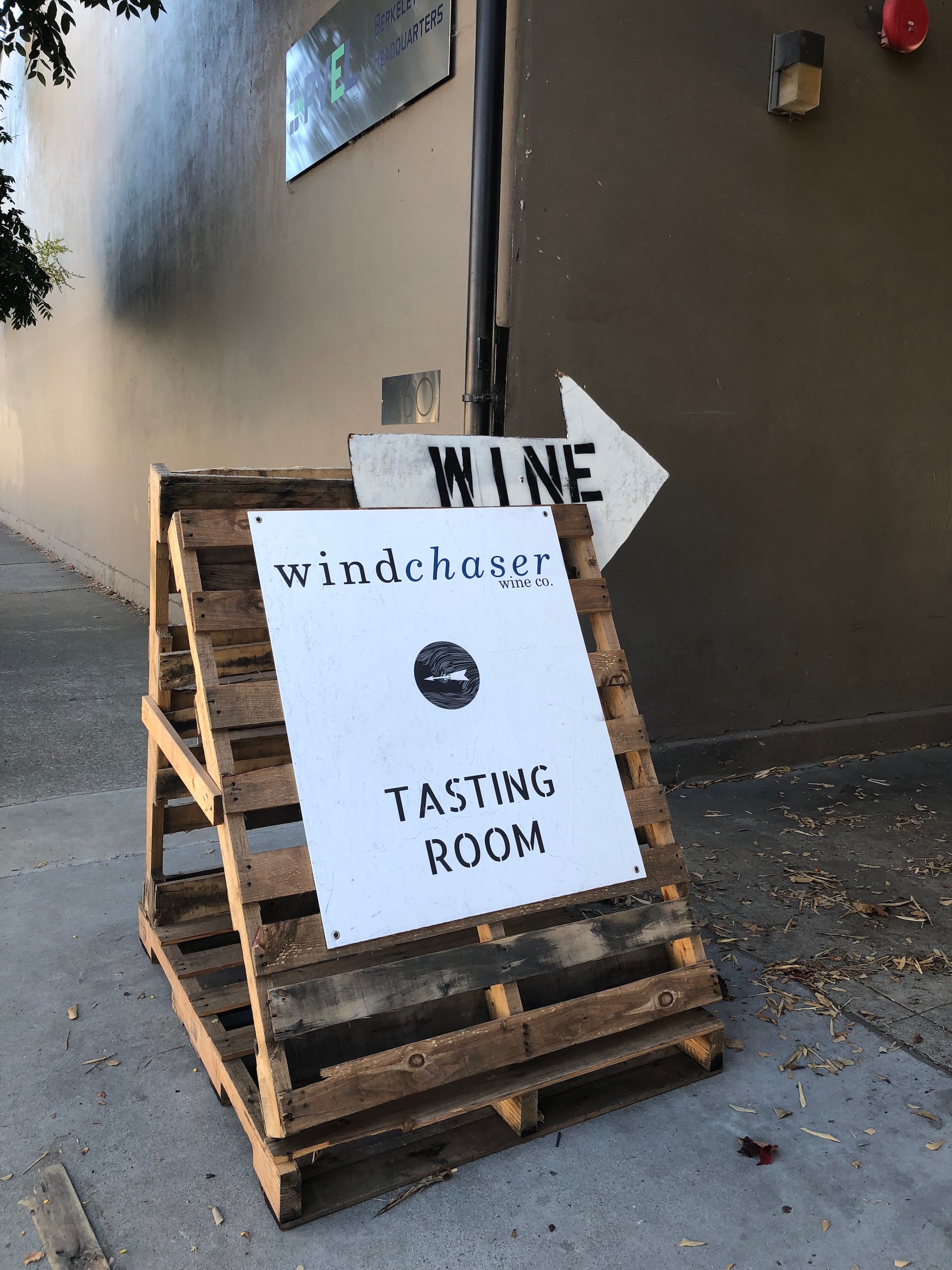
After a tasting at Donkey & Goat two years ago, my family saw a ‘wine tasting’ sign outside and — like many urban winery wine chasers — we figured why not continue the tasting crawl there? At that time, Windchaser was pretty much an unadorned warehouse with barrels of wine hanging out, and winemaker/owner Dave Gifford also hanging out, just talking about how he’s getting the hang of this having your own winery thing. After a recent visit, I’m convinced that he just might be producing the premier wine of any of the Bay’s urban wineries — and that’s really saying something with the quality of his peers.
The winery name is quite literal since he’s an avid windsurfer and surfer who, yes, chases after great waves as if he’s being blown around by the wind. It could also stand for how Gifford has bounced around a lot within the wine profession, going from working in restaurants and at the Ferry Plaza Wine Merchant, to a harvest at Donkey & Goat (another connection there), to being head of sales for the urban custom winery ‘Crushpad,’ to founding Dogpatch Wineworks (a connection to Côte West here).
The wind finally blew him to make wine under the Windchaser label in the Gilman District in 2015, which explains why everything was so new when we visited in 2017.
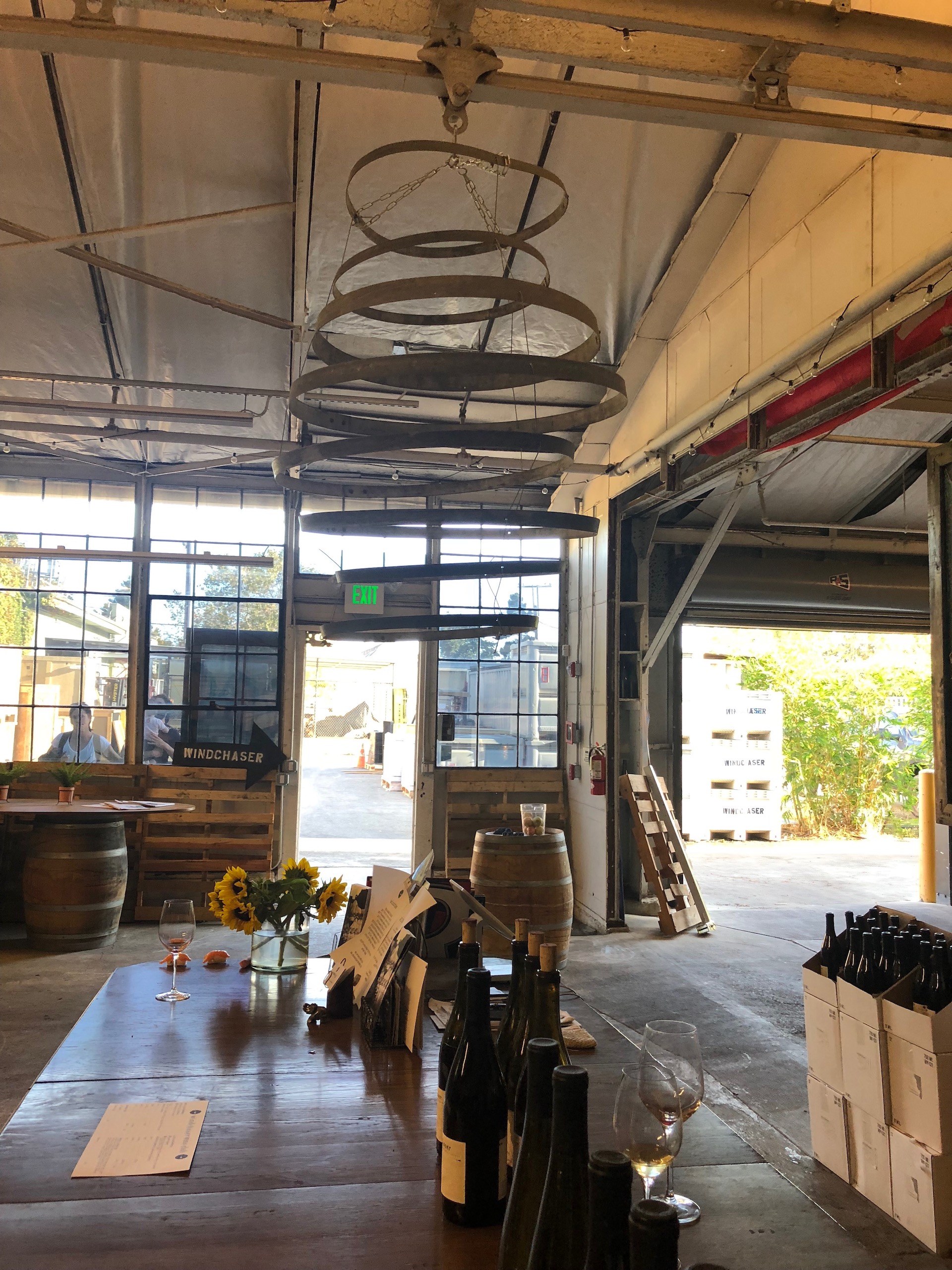
Windchaser’s tasting area is vast, fun and exceedingly casual, taking place in the same space as the wine production and barrel storage. Unlike in 2017, the tasting room now has some design aspects like flowers, a California flag, lots of tables made with barrels as bases and a retro 90s compact disk player (remember CD’s?!).
The wine is the real focus here, led by Anderson Valley Pinot Noir on the $16 tasting. Across the board quality is strong here, from a lively Chardonnay sourced also from the Anderson Valley to Mendocino Ridge Syrah. Even Gifford’s self-described “pizza wine,” the ‘Red Triangle’ blend, is a rollicking mix of Syrah, Grenache and Pinot Noir that has an easy-drinking body but a slick, deeply nuanced character of dried herbs and dried stone fruit.
Bonus winery: Vinca Minor
1335 Fourth St.
Berkeley
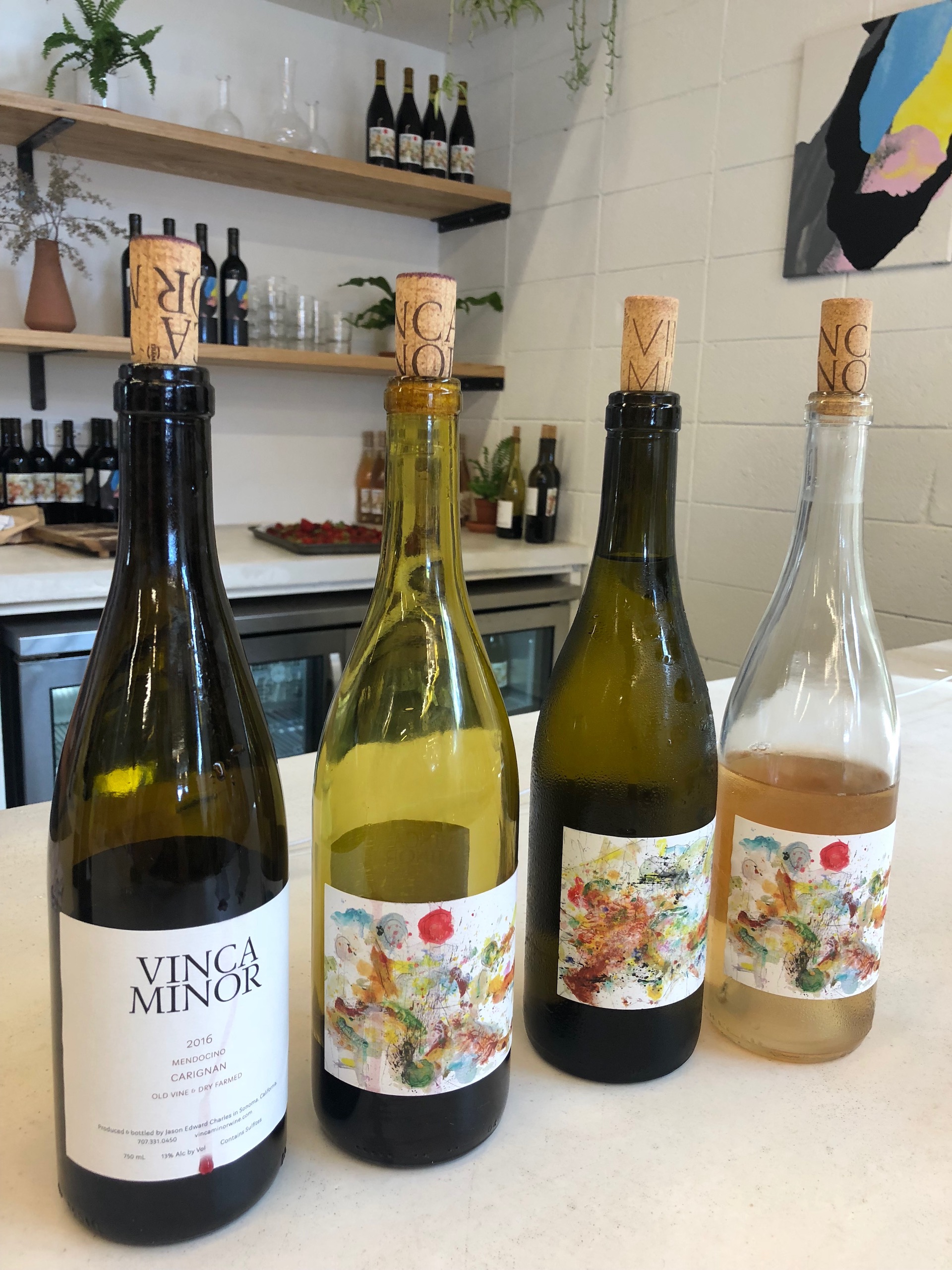
There’s one more winery now open to the public in the Gilman District — and it has been a longtime sommeliers-and-wine-geeks-favorite in the Bay Area. Winemaker/owner Jason Edward Charles worked at some of the world’s preeminent (and buttoned-up) wineries in Napa Valley and Pomerol, Bordeaux, and he’s taken those regions’ winemaking prowess with him on the Vinca Minor adventure, while also spinning those regions’ disciplined methodology and style all around, and loosening up the imaginary winemaking suit and tie.
When I visited Vinca Minor, which is right next to Windchaser on Fourth Street, it happened to be during an opening party, so a tasting wasn’t possible...but it is possible now on weekends for visitors to do a full tasting!
Carignan is a well-known signature for Vinca Minor and I enjoyed splashes of both the lighter 2017 and hearty, spicy 2016 before settling on the latter. Santa Cruz Mountains Chardonnay was the highlight that I remember from a 2018 wine dinner (at the newly closed, much missed Commonwealth) and my splash at the winery showed that it’s indeed terrific in the 2018 vintage too. Vinca Minor also produces rosé of Carignan, and a handful of other wines, mainly Bordeaux red varietals from the Sonoma County side of Carneros and from the Santa Cruz Mountains.
So, on your next urban winery visit, welcome the newest tasting room to the wine tasting neighborhood!